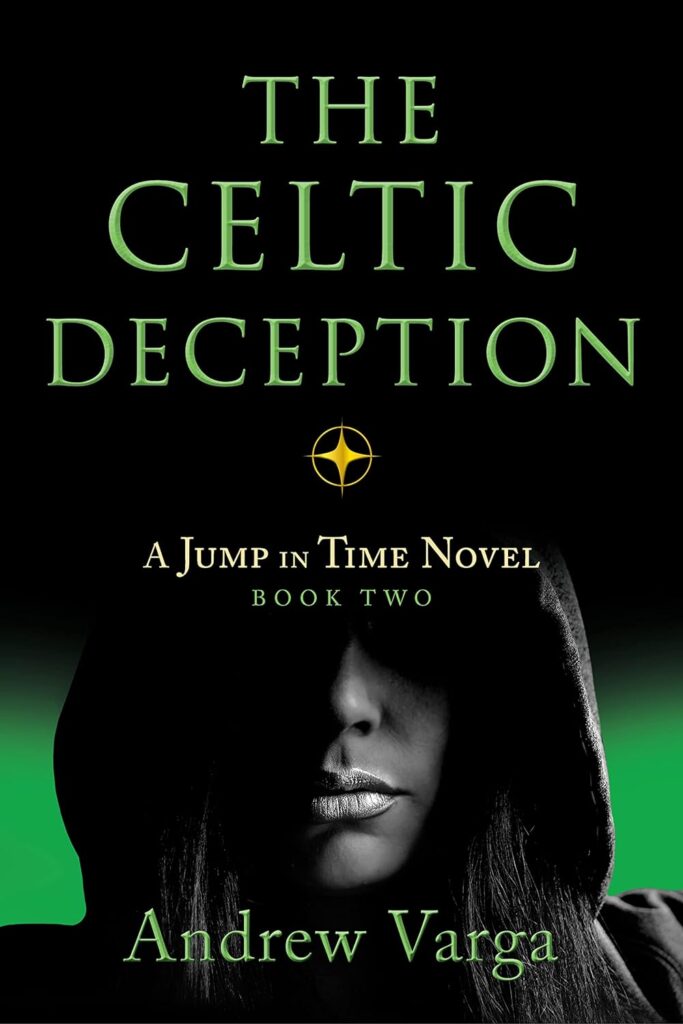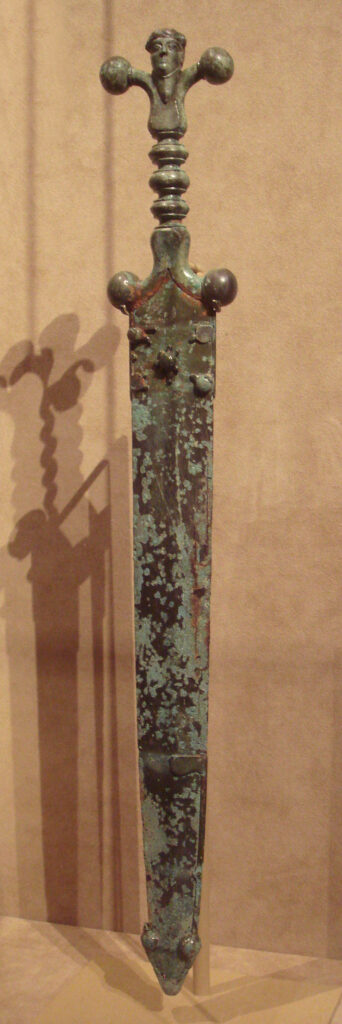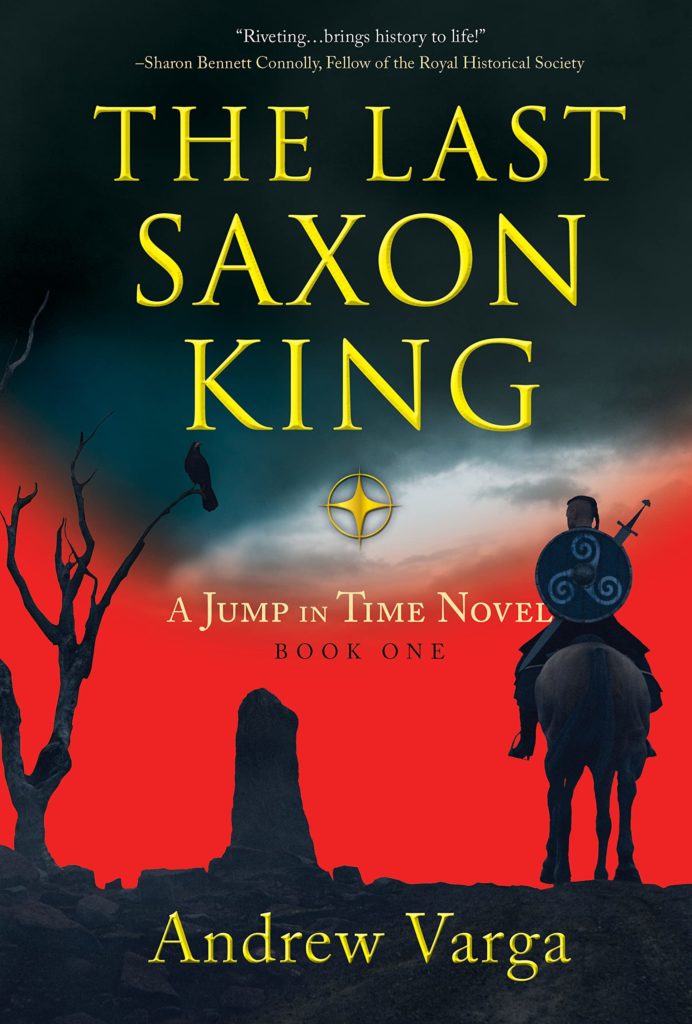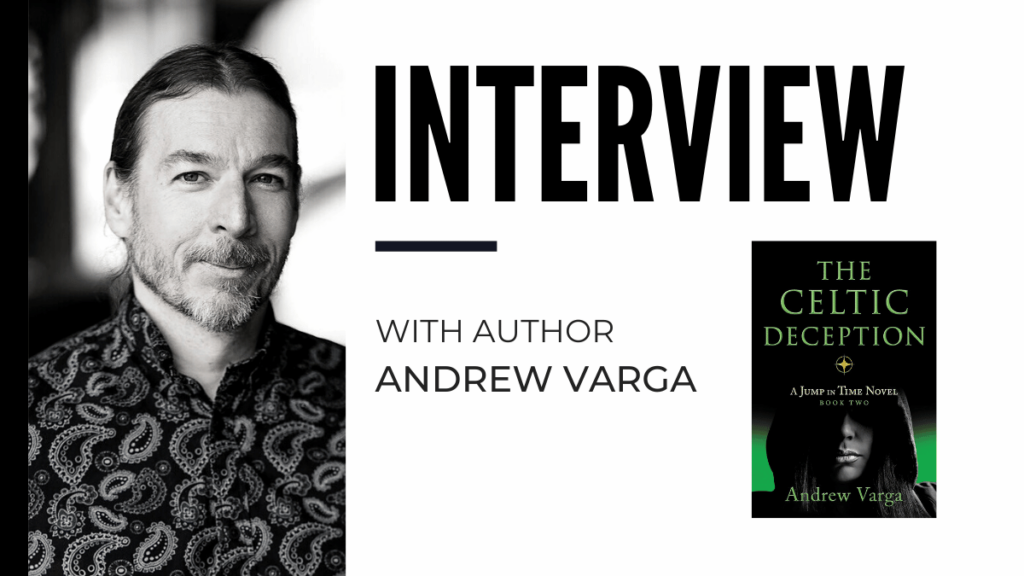An interview with Andrew Varga in partnership* with The Children’s Book Review and Imbrimfex Books.
Meet Andrew Varga, an avid history buff and author of the A Jump in Time series. Andrew’s love of history began when his mother told him he was descended from Vikings, and he has since immersed himself in historical books, movies, and travels across Europe. Along the way, he’s collected swords, shields, and other medieval weapons that now decorate his personal library. He’s also skilled in fencing, Kendo, and has even earned a black belt in karate.
Inspired by his children’s love of reading, particularly historical and fantasy stories, Andrew has written the second book in the series, The Celtic Deception. Read on to discover more about the exciting world of A Jump in Time!

Hi, Andrew! Your second book in the A Jump in Time series, The Celtic Deception, is ready for readers. Before we hear about it, what do you love most about writing historical fiction adventures for young adults that revolve around time travel?
Anyone who knows me knows that I absolutely love history. There are so many interesting tales with heroes, villains, brave deeds, and fateful decisions that drastically changed the course of a battle or a kingdom. And what I love most about writing a time travel series is that, by showing all these remarkable stories through the eyes of a modern-day teen, I get the chance to immerse younger readers in some of these fantastic episodes of our past and hopefully inspire their own interest.
Have you always been a history buff?
Definitely! I can’t actually remember a time when I didn’t love history. Even in Kindergarten, my favorite toy was the plastic castle that we had in class. In grade school, I would watch documentaries about World War I or II, or the Vietnam War, on TV with my dad, and I’d regularly take out books from the library on these subjects so I could expand my knowledge. In high school, I made sure to take every history course my school offered (which wasn’t many). So it was only natural that when I had to choose a program in university, I chose history. Even to this day, I tend to read mainly non-fiction so I can learn more about different people or past events.
I read that you have accumulated from your travels around the globe a collection of swords, shields, and other medieval weapons that now adorn your personal library. Have any of these artifacts become inspiration for your stories?
The inspiration for my stories has come from many sources, but my personal collection of weapons is not one of them. What my collection has done for me, though, is it has allowed me to imagine what my characters would feel and think when they get caught up in medieval battles. I know the weight of various swords and how tired a person’s arm will get after repeated swings. I know how heavy a shirt of chain mail is and what it feels like to move around in one. I know how shields were made and what it would take to make one shatter. All of these details may seem trivial, but they help me write vivid scenes that bring ancient battles to life.

Did you always want to be a writer? Was it a childhood dream or something you grew into?
My childhood dream was to work with planes, either to fly them or to design them. I absolutely loved the idea of flight. It was only when I was in my teens, and reading a lot of fantasy books by authors such as Tolkien, Robert Howard, and Terry Brooks, that I started thinking of becoming a writer. But dreams don’t become reality without hard work behind them, and as a teenager, I didn’t have the self-discipline to actually be a serious writer. I’d write the occasional short story or scribble some ideas down on a notepad, but I didn’t write consistently, and I did nothing to improve my craft.
When I was in my mid-twenties, though, I started to focus more effort on writing. I ended up joining a writing circle at the local library where the other authors would critique my submissions. Through their constant feedback and advice, I was finally able to take my writing to the next level. And the rest, as they say, is history.
The A Jump in Time series revolves around a young boy named Dan Renfrew. Tell us about him—where the idea for this character stemmed from and anything else you think readers should know about him.
When we first meet Dan, he’s pretty much your average video-game-playing, movie-watching teen. The only thing that marks Dan as different from other teens is that he’s been homeschooled with an excessive focus on history and medieval combat skills. Dan has no idea why his father has insisted on this sort of education, but when Dan accidentally transports himself to England in the year 1066, it soon becomes clear. His father had been training him to be a time jumper—someone dedicated to fixing glitches in the past that threaten to alter history. Unfortunately for Dan, since he was never told of this huge responsibility that has now been thrust upon him, he stumbles through the past. He tries to do his best but sometimes comes up short.
The idea for Dan came very naturally to me. Since I was writing a YA series, I knew a teen had to be my main character, and I decided to make him male so I could draw on my own past experiences for inspiration. Even though my teen years were decades ago, I still remember so many of the dumb things I said, the dumb choices I made, and how flustered I became around girls I liked. And my two sons, their cousins, and their friends have shown me that modern-day males haven’t magically improved in maturity since my days of being a teen; they just have more technology to play with. So there was no lack of inspiration or examples for Dan.
Both stories in the series are filled with mystery, humor, and suspense and capture critical historical moments through Dan’s eyes. How do you find the balance for all these elements?
I don’t have any magical formula for these elements. When it comes to writing, I know before I start a book which historical period Dan and Sam will travel to, which real people from the past they will meet, what the source of the time glitch will be, and how Dan and Sam will need to solve it. But that’s about it. So the book always starts off as a mystery with Dan and Sam trying to figure out what is wrong with the time stream.
I also know how many battles I want to throw Dan and Sam into and what is going to happen to them during those battles. I then start writing my first draft, which is usually just dialog and a bare minimum of description. As I go through multiple edits of this draft, secondary characters begin revealing their personalities to me and start showing me where they want to go in the book. For instance, in The Celtic Deception, I had never dreamed that Atto and Senna would take such a major part in the story. But as I began writing them, they just started coming to life, demanding that their story be told. And other bits, like the humor and the suspense, just kind of grow on their own as all the characters begin interacting.
I’m very fortunate in that I have a lot of people who read my chapters and provide great feedback to tell me when things are flat or lacking emotion and help me add more layers to a scene or a chapter to make it work.
In the first book, The Last Saxon King, Dan is accidentally transported back in time to England in 1066. In the second book, The Celtic Deception, Dan and his friend, Sam, travel to 60 CE on the Celtic Island of Anglesey. How do you decide which moments of history you want to include in the stories?
I picked 1066 England for the first book because of my love of the Anglo-Saxon language. In university, I took two courses on it, including one where we had to translate Beowulf in its entirety. So when I was thinking of what to write about in my first book, my thoughts naturally went to Anglo-Saxon England. And I ended up choosing 1066 because that is such a pivotal year in English and world history. In just two short months, the last major Viking raid happens, effectively ending the Viking era, and then that is followed up with the Norman invasion of England, which completely alters the language and English history. So this point seemed like a great place to start off my series.

For book two, I chose Celtic Wales because I’ve always felt that the Celts were the forgotten people of history. They lived throughout Europe, from Ireland to Turkey, but not much is ever written about them from a historical perspective. I really wanted to give readers a chance to learn about these people, and the Roman attack against the druids seemed like an ideal setting.
Book three, which comes out next year, takes place in Mongolia. I chose that location because I’ve always been intrigued by the polarizing figure of Genghis Khan. He went from a teenage outcast, living off berries in the woods, to the ruler of the largest land empire ever known. Although his later life is known for conquest and violence, his early years tell a fascinating story that shows what can be done with determination and willpower. There are seven books in the complete series, and the historical periods for all of them were picked for the same reason—there was something about the time period or the people that just resonated with me.
In The Celtic Deception, two Roman legions are coming to wipe out the entire island of Anglesey. Dan and Sam are the only ones who can step up and stop the villainous Victor Stahl’s plot, but time is not on their side! Can you share five words you think best describe this book?
Gripping. Adventurous. Historical. Vivid. Revealing.
When readers reach the end of the story, do you leave them wanting a third book in the series? What should we expect next?
Yes! It is my hope that readers will stay with Dan and Sam throughout their journey. Although readers might have closure to what happened in Celtic times, there is still the overarching story regarding Victor Stahl and his plot to rule the world that needs to be resolved. As for what readers should expect in book three, The Mongol Ascension, I send them on a deep dive into Mongolian history, with some twists that weren’t in previous books. In addition, book three has much more action happening in the modern world than the previous two and introduces some new characters.
Is there anything else you think we should know about the series, The Celtic Deception, your writing, or yourself?
The Jump in Time series was inspired by my three kids. All of them are avid readers, and they would regularly show me the books that they found interesting. However, over time I began to notice that in a lot of the historical fiction books they were reading, historical accuracy was not a priority. From this observation grew the idea of writing a series of books for young adults that were historically accurate. And I chose to write a time travel series so that I wouldn’t be stuck in one particular time period—I could send the readers back to so many different points in the past.
Because I try to be as accurate as possible, each book does take a while to write. Before I type my first sentence, I will have spent a few months researching the time period, including things like clothing, foods, major events, and historical figures. Then, while I’m writing, I also do a lot of side research on minor details that most people won’t notice, but I throw in just to ensure accuracy and to add a bit of color to a scene. It’s a lot of work, but I enjoy learning so many new things. And my readers seem to like what I’ve done as well. My books have garnered a lot of reviews praising their historical detail and the interesting little snippets from the past that they reveal.
About the Book

The Celtic Deception
Written by Andrew Varga
Ages 12+ | 305 Pages
Publisher: Imbrifex Books | ISBN-13: 9781945501876
Publisher’s Book Summary: Every second counts in the fight to save all time.
Dan Renfrew hates that he’s a time jumper—seventeen-year-olds should not be stuck with the responsibility of saving history. But with no one else stepping up to stop Victor Stahl’s plot to take over the world, Dan and his time-jumping partner Sam have no choice but to jump back into history again. They land on the Celtic island of Anglesey in 60 CE, hoping to find answers on how to stop Victor. Their task isn’t easy. Everyone seems to be hiding something, from the druids who rule Anglesey to the Celts who take the time jumpers in. As two Roman legions—intent on wiping out everyone on the island—draw closer, time is running out for Dan and Sam.
Buy the Book
About the Author
Ever since his mother told him he was descended from Vikings, Andrew Varga has had a fascination for history. He’s read hundreds of history books, watched countless historical movies, and earned a BA from the University of Toronto with a specialist in history and a major in English. Andrew has traveled extensively across Europe, where he toured some of the most famous castles, museums, and historical sites that Europe has to offer.
During his travels, he accumulated a collection of swords, shields, and other medieval weapons that now adorn his personal library. He is skilled in fencing and Kendo—the Japanese art of sword fighting. He has also used both longbows and crossbows, built a miniature working trebuchet, knit his own shirt of chain mail, and earned a black belt in karate. Andrew currently lives in the greater Toronto area with his wife Pam, their three children, and their mini-zoo of two dogs, two cats, a turtle, and some fish. It was his children’s love of reading, particularly historical and fantasy stories, that inspired Andrew to write this series.

This interview—Andrew Varga Discusses The Celtic Deception: A Jump in Time Novel—was conducted between Andrew Varga and Bianca Schulze.

